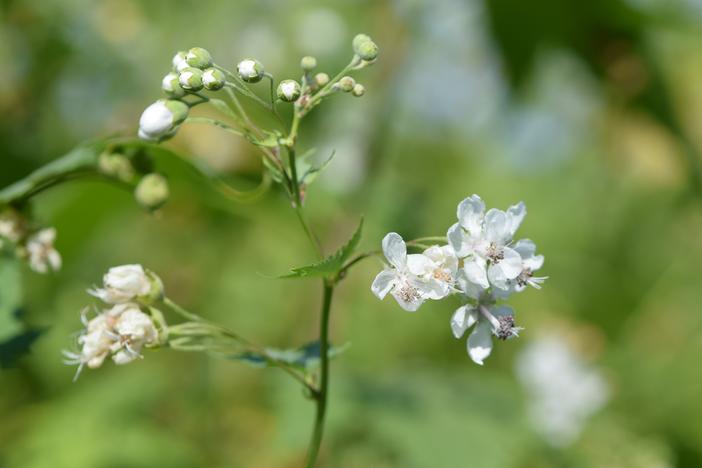Virginia Fanpetals
(Sida hermaphrodita)
Virginia Fanpetals (Sida hermaphrodita)
/
/

Krzysztof Ziarnek, Kenraiz
CC BY-SA 4.0
Image By:
Krzysztof Ziarnek, Kenraiz
Recorded By:
Copyright:
CC BY-SA 4.0
Copyright Notice:
Photo by: Krzysztof Ziarnek, Kenraiz | License Type: CC BY-SA 4.0 | License URL: https://creativecommons.org/licenses/by-sa/4.0 | Uploader: Kenraiz | Publisher: Wikipedia Commons





























Estimated Native Range
Summary
Sida hermaphrodita, commonly known as Virginia fanpetals or Virginia mallow, is a perennial herb native to floodplain forests, wet meadows, and riverbanks in Eastern North America. It can grow from 1 to 4 meters tall with a stem diameter of up to 3 centimeters. The plant is characterized by its upright branching form and heart-shaped leaves. During the summer, it produces clusters of small, white flowers that are attractive to pollinators. The flowers are not particularly showy but are valued for their nectar by bees. Virginia mallow does not typically produce notable fruit or berries.
Virginia fanpetals are appreciated for their adaptability and use in various applications. They are cultivated for their fibrous stems, which have potential in the textile industry, and as a fodder crop for livestock. Additionally, their nectar-rich flowers make them a beneficial addition to beekeeping operations. The plant’s potential as a biomass source for alternative energy is also being explored. In the garden, it is used for naturalizing in wet areas and can be an attractive addition to rain gardens or along pond edges. Virginia mallow thrives in full sun to part shade and prefers moist to wet soils with good drainage. While it is relatively low maintenance, it can spread vigorously under optimal conditions, which should be considered when planting.CC BY-SA 4.0
Virginia fanpetals are appreciated for their adaptability and use in various applications. They are cultivated for their fibrous stems, which have potential in the textile industry, and as a fodder crop for livestock. Additionally, their nectar-rich flowers make them a beneficial addition to beekeeping operations. The plant’s potential as a biomass source for alternative energy is also being explored. In the garden, it is used for naturalizing in wet areas and can be an attractive addition to rain gardens or along pond edges. Virginia mallow thrives in full sun to part shade and prefers moist to wet soils with good drainage. While it is relatively low maintenance, it can spread vigorously under optimal conditions, which should be considered when planting.CC BY-SA 4.0
Plant Description
- Plant Type: Herb
- Height: 3-8 feet
- Width: 1-1.5 feet
- Growth Rate: Moderate
- Flower Color: White
- Flowering Season: Summer
- Leaf Retention: Deciduous
Growth Requirements
- Sun: Full Sun, Part Shade
- Water: Medium
- Drainage: Fast
Common Uses
Bee Garden, Bird Garden, Butterfly Garden, Drought Tolerant, Low Maintenance
Natural Habitat
Floodplain forests, wet meadows, and riverbanks in Eastern North America
Other Names
Common Names: Virginia Mallow, Mauve De Virginie, Sida Hermaphrodite
Scientific Names: , Sida hermaphrodita, Ripariosida hermaphrodita, Napaea hermaphrodita,
GBIF Accepted Name: Ripariosida hermaphrodita (L.) Weakley & D.B.Poind.